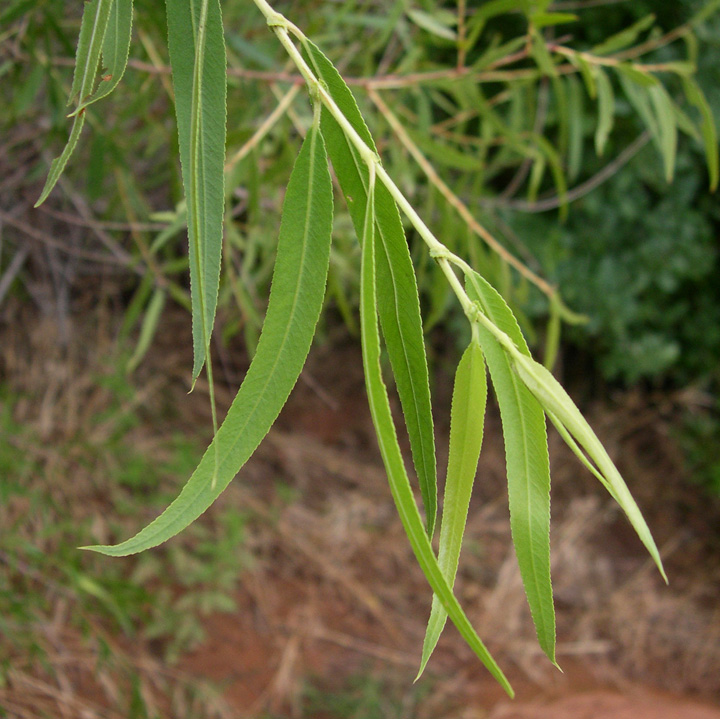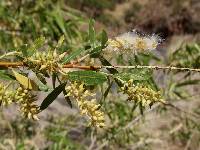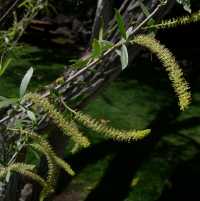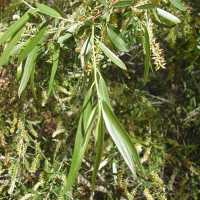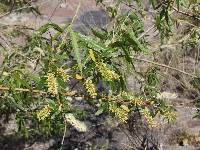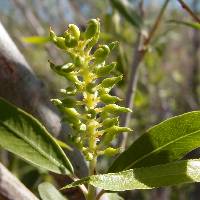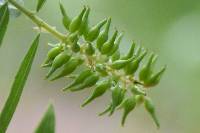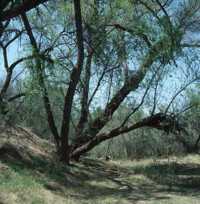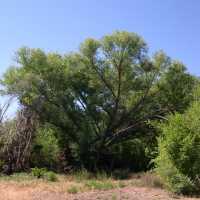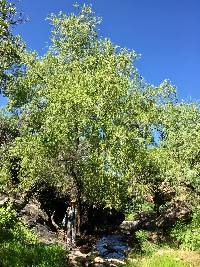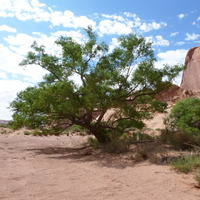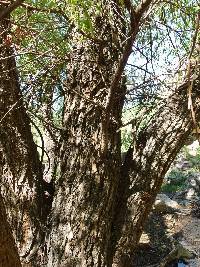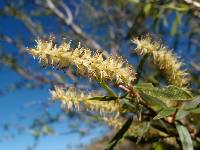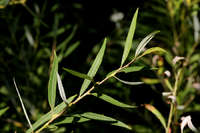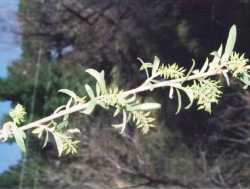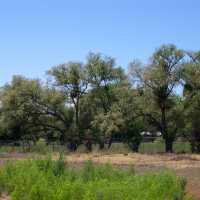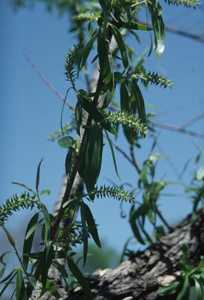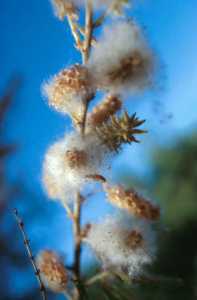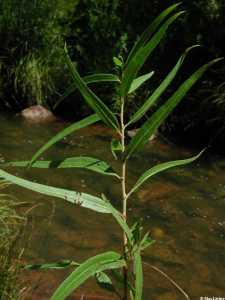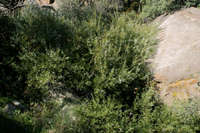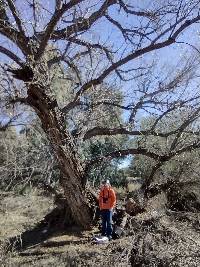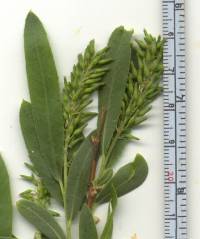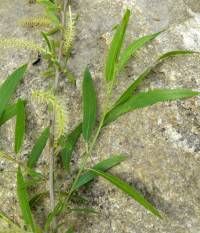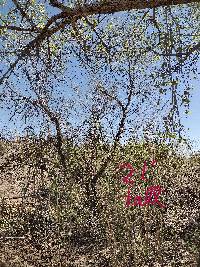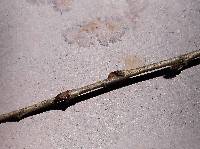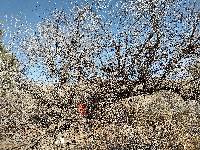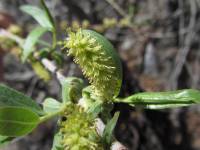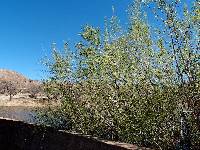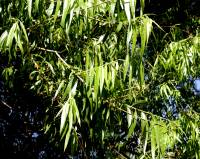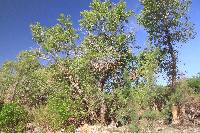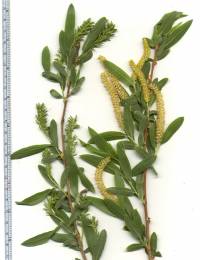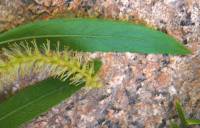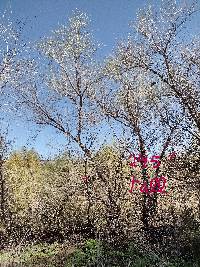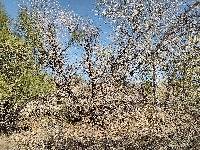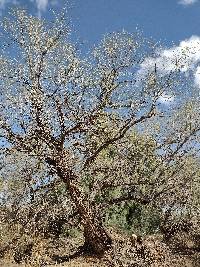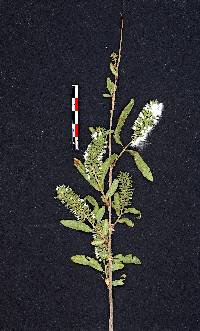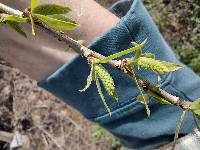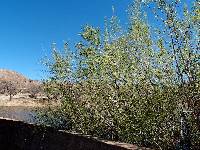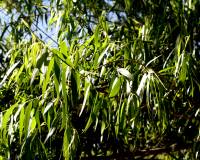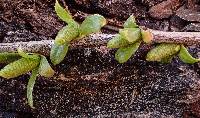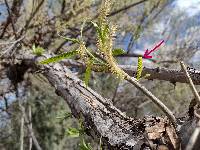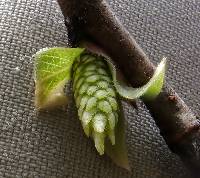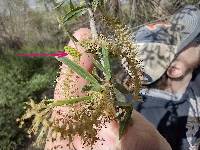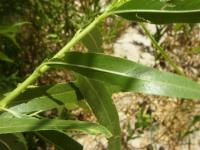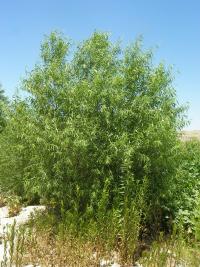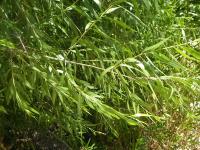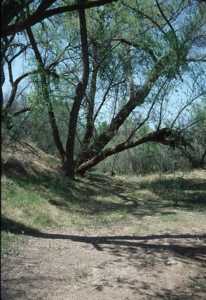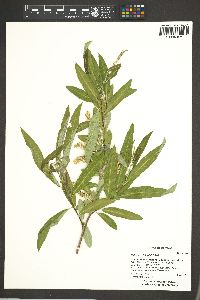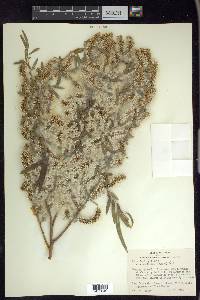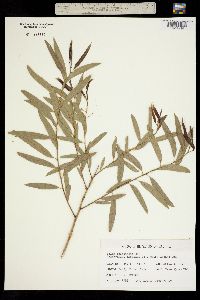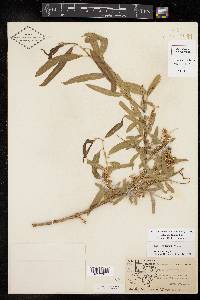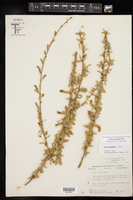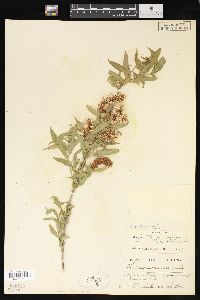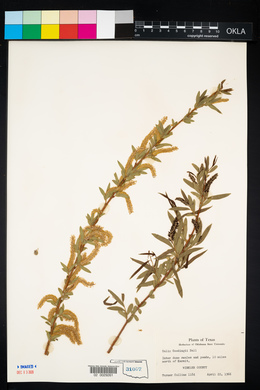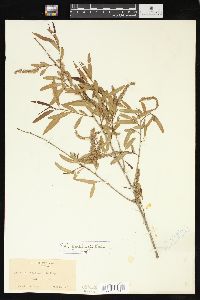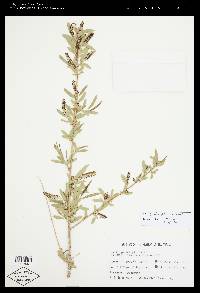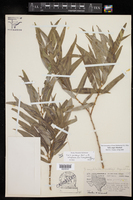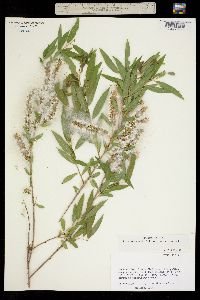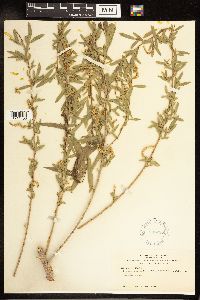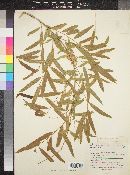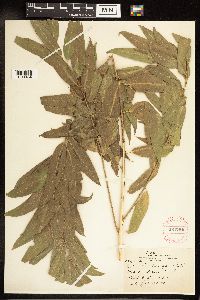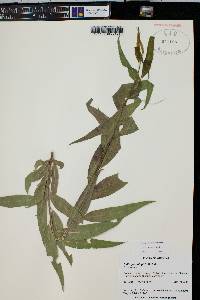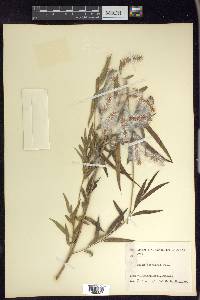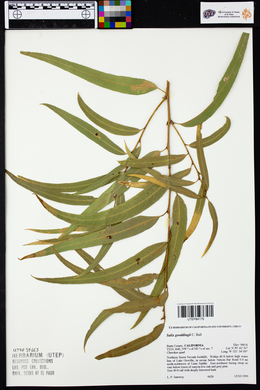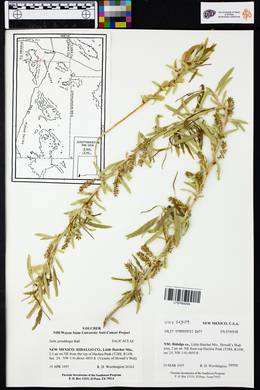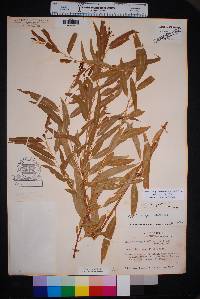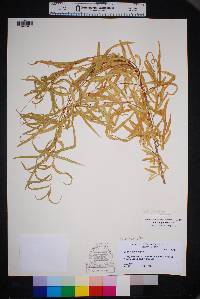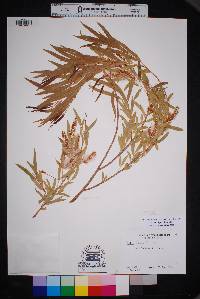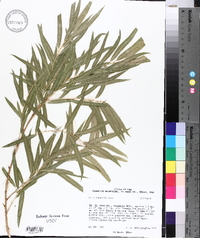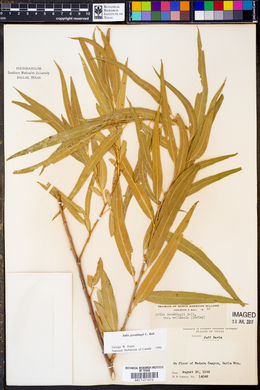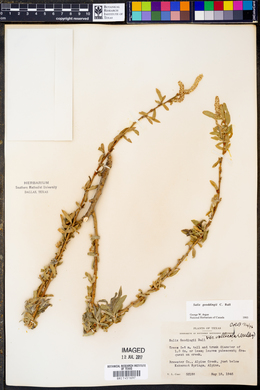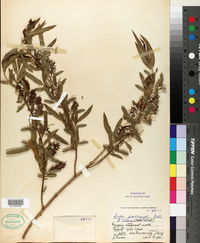
|
|
|
|
Family: Salicaceae
Goodding's Black Willow, more...Goodding's willow, Goodding willow, Gooding black willow (es: sauce, sauz)
[Salix gooddingii var. gooddingii, moreSalix gooddingii var. vallicola (Dudley) Ball, Salix gooddingii var. variabilis Ball, Salix nigra var. vallicola Dudley, Salix vallicola (Dudley) Britt. & Shafer] |
Trees, 3-30 m. Stems: branches flexible to ± brittle at base, yellow-brown to gray-brown, pubescent to glabrescent; branchlets usually yellowish or yellow-green, sometimes reddish brown, puberulent or pubescent to glabrescent. Leaves: stipules broad rudiments or foliaceous on early ones, foliaceous on late ones, (glands numerous adaxially), apex rounded to convex; petiole (sometimes with spherical glands distally), 4-10 mm, pilose adaxially; largest medial blade (sometimes amphistomatous), narrowly elliptic, very broadly oblong, lorate, or linear, 67-130 × 9.5-16 mm, 4.7-12.4 times as long as wide, base cuneate to convex, margins serrulate to serrate, apex acuminate, caudate, or acute, abaxial surface (usually not glaucous, rarely thinly so), glabrous or puberulent, hairs wavy, adaxial slightly glossy, pilose to glabrescent; proximal blade margins entire or shallowly serrulate; juvenile blade sparsely velvety to pilose abaxially, hairs white. Catkins: staminate 19-80 × 6-10 mm, flowering branchlet 2-23 mm; pistillate 23-82 × 6-15 mm, flowering branchlet 2-48 mm; floral bract 1.4-2.4 mm, apex acute or rounded, entire or toothed, abaxially sparsely to moderately densely hairy, hairs wavy; pistillate bract deciduous after flowering. Staminate flowers: abaxial nectary (0.2-)0.3-0.6 mm, adaxial nectary square to ovate, 0.2-0.6 mm, nectaries distinct; stamens 4-6(-8); filaments (sometimes basally connate), hairy on proximal 1/2; anthers 0.4-0.5 mm, (axes straight). Pistillate flowers: adaxial nectary square (flattened), 0.2-0.6 mm; stipe 1.2-3.2 mm; ovary pyriform, (sometimes villous), beak slightly bulged or abruptly tapering to styles; ovules 12-18 per ovary; styles 0.1-0.3 mm; stigmas 0.2-0.29-0.32 mm. Capsules 6-7 mm. 2n = 38. Flowering late Mar-Jun. Riparian forests, springs, seepage areas, washes, meadows; -40-500(-2500) m; Ariz., Calif., Colo., Nev., N.Mex., Okla., Tex., Utah; Mexico (Baja California, Chihuahua, Coahuila, Guerrero, Sinaloa, Sonora). Salix gooddingii and S. nigra are closely related and are sometimes treated as conspecific (C. R. Ball 1950). Salix gooddingii has yellow-brown or pale gray-brown branches, capsules 6-7 mm, and ovaries usually glabrous but pilose in ca. 20% of specimens. Salix nigra has red-brown to dark gray-brown branches, capsules 3-5 mm, and ovaries almost always glabrous. A single plant with pilose ovaries was found in Ontario, Canada; reports (W. A. Archer 1965) of S. nigra with hairy ovaries in Alabama, Arkansas, Illinois, Iowa, Kansas, Massachusetts, Oklahoma, and Texas could not be confirmed. Ranges of these taxa overlap in west-central Texas, where there is evidence of intergradation; they rarely occur in the same population. The map by E. L. Little Jr. (1971), who treated them as conspecific, shows a significant range disjunction between the two. Catkins of Salix gooddingii flowering in March and early April are sometimes borne in leaf axils. This suggests that the sylleptic condition, typical of S. bonplandiana, is sometimes ecotypic. Hybrids: Salix gooddingii forms natural hybrids with S. amygdaloides and S. nigra. Hybrids with S. lasiandra have been reported (C. K. Schneider 1921); no convincing specimens have been seen. Salix gooddingii × S. laevigata: In Arizona, a popula-tion of young plants displays intermediate characteristics. They have leaf blades sparsely glaucous abaxially, as in S. laevigata, but narrow, often amphistomatous, and with petioles sometimes not glandular distally, as in S. gooddingii. Both parental species occur in the region. This hybrid was also reported by C. K. Schneider (1921) from California. Salix gooddingii × S. nigra: This hybrid may occur in western Texas where the parental species overlap. Some specimens from that area seem to be 'intermediate' in branch color, but the differences are subtle.
Plant: Dioecious tree; to 30 m tall; branches flexible to brittle at base, yellow- to gray-brown, glabrous or becoming so; branchlets yellowish to yellow-green, sometimes reddish-brown, glabrous, pilose, or velvety becoming glabrous; budscale margins free and overlapping Leaves: stipules leaflike or rudimentary; petioles pilose, 4-10 mm long, gland-dotted at base of blade; proximal leaves on vegetative branchlets or on flowering branchlets entire, gland-dotted, or serrulate; young leaves pilose to velvety; mature blade linear to ligulate or very narrowly elliptic, 67-130 mm long, 9.5-16 mm wide, 4.7-12.4 times as long as wide, the lower surface non-glaucous, the upper surface shiny, the base acute to cuneate; margins flat, serrulate or serrate, with 5-10 teeth or glands per cm, the apex acuminate INFLORESCENCE: cylindrical or subspherical catkins; coetaneous; floral bracts tawny, 1.4-2.4 mm long with wavy hairs, the apices acute or rounded; pistillate floral bracts deciduous after flowering Flowers: STAMINATE FLOWERS in densely to loosely flowered catkins, 35-70 mm long; flowering branchlets 5-25 mm long; stamens 4-8; filaments hairy; nectaries 1-3 slender abaxial lobes. 1-2 square or ovate adaxial lobes, 0.25-0.5 mm long. PISTILLATE FLOWERS: in loosely flowered catkins 22-65 mm long; flowering branchlets 4-25 mm long; ovaries glabrous to sometimes villous; stigmas 0.2-0.32 mm long; styles 0.1-0.3 mm long; stipes 1.2-3.2 mm long; nectary square to half-cup-shaped, 0.2-0.6 mm long, shorter than stipe Fruit: lanceolate to ovate Misc: Warm temperate to subtropical; forests along rivers cienegas, seepage areas, washes, and meadows; 50-2500 m (150-7500 ft); Mar-Jun Notes: Margins of leaves glandular-serrulate. Petiole has glands. Both sexes in catkins, subtended by a scale-like bract. Catkins not pendulous.Seeds minute and subtended by silky hairs.Leaves deciduous. Winter buds covered with one scale. Buds come before or with the leaves References: Kearney & Peeble; Arizona Flora. McDougall; Seed plants of Northern Arizona. Hickman, ed.; The Jepson Manual. ASU specimans. Argus, George W. 1995. SalicaceaePart 2. Salix. J. Ariz. - Nev. Acad. Sci. 29(1): 39 Benson and Darrow 1981, Argus 1995, Heil et al. 2013, Carter 2012 Common Name: Goodding's willow Duration: Perennial Nativity: Native Lifeform: Tree Wetland Status: FACW General: Deciduous, medium to large sized trees, often growing to 15 m tall but reported as tall as 30 m; bark is thick and gray, and split into many furrows and ridges; twigs yellowish and hairy. Leaves: Alternate along the branchlets, on pilose petioles 4-10 mm long; stipules rudimentary or leaflike; blades linear to very narrowly elliptical, but widest at the base, 6-13 cm long and 9-16 mm wide, 4-12 times as long as wide; margins finely toothed; upper and lower leaf surfaces green to yellow green and hairless. Flowers: Catkins develop after the leaves are fully formed in the spring; male and female catkins on separate trees; catkins yellowish, 2-8 cm long, rather lax; each flower subtended by a greenish, whitish, yellowish, or tawny floral bract which is covered with short wavy hairs and falls off after flowering. Fruits: Capsule 3-7 mm long, glabrous or pubescent, on a short stalk; splitting into 2 sections to release many cottony seeds. Ecology: Found along streams, in canyons and wet meadows, below 7,500 ft (2250 m); flowers March-June. Distribution: CA, NV, s UT, AZ, w CO, NM, TX; south to c MEX. Notes: This is the most common native willow in the Southwest, forming small shrubs to large-trunked trees in riparian forests; distinguished by its fissured bark; lance shaped, entirely green leaves with serrate margins; hairy yellowish twigs; and its conspicuous bud scale margins. A similar species S. laevigata has wider leaves, whitish leaf undersides and more reddish twigs. A preferred food for beavers, and is used in beaver dams. Ethnobotany: Not a valuable commercial species in Arizona. Pima used this species in basket making. Etymology: Salix is the classical Latin name for willow trees, perhaps derived from salio, to leap or spring, from the quickness of their growth; gooddingii is named after western North American botanist Leslie Newton Goodding (1880-1967), one of the first to explore the southern Arizona area. Synonyms: Salix gooddingii var. vallicola, Salix gooddingii var. variabilis, Salix nigra var. vallicola, Salix vallicola Editor: SBuckley 2010, FSCoburn 2015, AHazelton 2017 |
|
|
|

